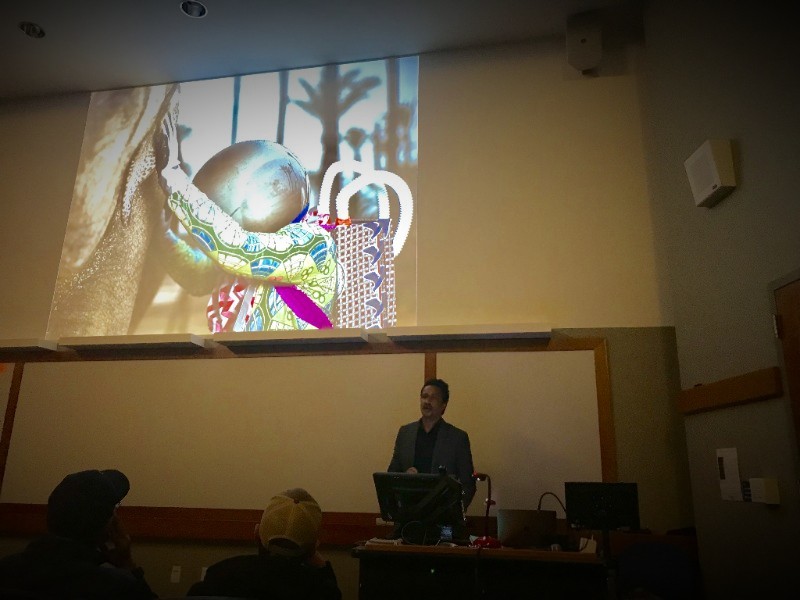 On Monday, March 19, UF’s Center for African Studies and School of Architecture co-sponsored a keynote address by DK Osseo-Asare, assistant professor of architecture and design at the Pennsylvania State University and co-founder of the Ghana and Texas-based LOWDO design studio. Addressing a crowded room of design, architecture, and African Studies-affiliated undergraduate and graduate students and faculty in UF’s Fine Arts lecture hall, DK passionately introduced his work with LOWDO and the Agbogbloshie Makerspace Platform, or APM Spacecraft. DK posed the idea of “Occupying Africa” at the beginning of his talk as a two-fold form of empowerment for the future of a rapidly expanding and urbanizing African continent. “Occupying Africa” is a call to shift both scale and perspective, a way of leveraging design to enhance the agency of the poor and a path to expanding the scope of architecture as a fabricated mode of designing for the futures of African cities, landscapes, people, and materials.
On Monday, March 19, UF’s Center for African Studies and School of Architecture co-sponsored a keynote address by DK Osseo-Asare, assistant professor of architecture and design at the Pennsylvania State University and co-founder of the Ghana and Texas-based LOWDO design studio. Addressing a crowded room of design, architecture, and African Studies-affiliated undergraduate and graduate students and faculty in UF’s Fine Arts lecture hall, DK passionately introduced his work with LOWDO and the Agbogbloshie Makerspace Platform, or APM Spacecraft. DK posed the idea of “Occupying Africa” at the beginning of his talk as a two-fold form of empowerment for the future of a rapidly expanding and urbanizing African continent. “Occupying Africa” is a call to shift both scale and perspective, a way of leveraging design to enhance the agency of the poor and a path to expanding the scope of architecture as a fabricated mode of designing for the futures of African cities, landscapes, people, and materials.
DK talked about his on-going concern with lowness, lightness and minimalism in conditions of ongoing scarcity across the globe. He highlighted his work with APM Spacecraft as an example of how we might move beyond the present moment in order to imagine radical futures— to escape the contemporary sense that things cannot be changed and contest ways in which the future of Africa has been foreclosed. The concept behind the APM Spacecraft is a reinvention of the wastelands of Agbogbloshie, infamously known as one of the world’s largest e-waste dumps, in order to create a better ecosystem for the community. Located in the heart of Accra, the APM Spacecraft project is a makerspace, or open workshop area that seeks to create a better life for local youth through collaborative, community-driven design build. Influenced by the geometrical theory of stellation, the makerspace builds outwards from the five core facets of design, explore, map, codesign, and protoptype. It is an iterative, simultaneous process wherein grass-roots makers are empowered to reclaim Ghana’s maker culture and build a better future for their community and ecosystem. Once toxic e-waste is transformed into reusable items such as pots, cook-stoves, decorative metal works—even a drone. Sankofa, a word in the Twi language that translates to an understanding that in order to be successful in the future you must draw on the past, is the mantra behind the project. In what ways might we draw from the inspirational work of DK and others with the Agbogbloshie Makerspace Platform in order to “Occupy Africa” and our own communities through innovative design?